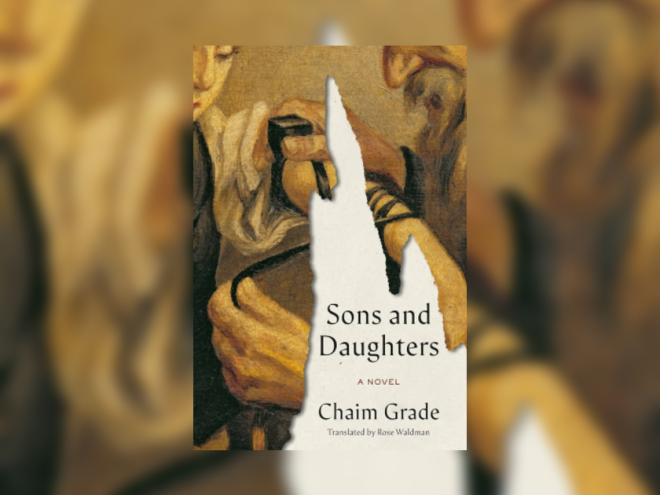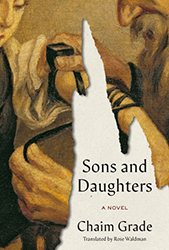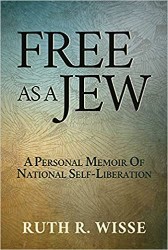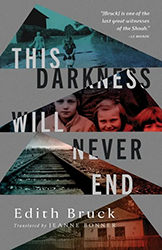Mayn krig mit Hersh Rasseyner (My Quarrel With Hersh Rasseyner) has never fit neatly into standard categories of literature. Introducing her new-and-complete English translation of what could reasonably be referred to as Chaim Grade’s most well-known work, Ruth R. Wisse notes that upon initial publication, the Yiddish press could not agree on the genre of Grade’s meditation on postwar life and Jewish identity. “But what kind of prose was this? A story? A memoir? What the editors designated an ‘essay’ was Grade’s own hybrid form to contain the wars raging inside him: a slice of fictionalized autobiography that harked back to his poem ‘Musarists,’ transporting its yeshiva arguments into a postwar debate between two survivors.
Wisse argues that Mayn krig should be read as a story, and her (excellent) translation paints a vivid portrait of the conversations that Grade clearly replayed internally. Much of the text is soliloquy; Chaim Vilner (the protagonist and stand-in for Grade himself) encounters — and argues with — his former yeshiva classmate, Hersh Rasseyner, three times over the course of eleven years. In 1937, Chaim returns to Bialystok, where, seven years earlier, he left his Hasidic classmates behind. In 1939, he sees Hersh in a bread line, and the two have a brief but withering interchange. “Hersh, I bear no more responsibility for all this than you do for me,” Chaim Vilner says, as the two of them gaze upon Red Army tanks blocking their path. “You’re wrong, Chaim,” Hersh mutters in response. “I do bear responsibility for you.
When Chaim spots Hersh in a crowded Parisian metro car in 1948, he can hardly believe his eyes. “My heart began to pound. Could he really be alive? Hadn’t he been in Vilna under the German occupation?” It seemed like a forgone conclusion to Chaim that the most devout among Jews would have been targeted most directly. And yet there Hersh is — thinner, more distracted in his gaze, steadfastly instructing yeshiva boys in Torah and abiding by Jewish law more fervently than before. In this final exchange, as Chaim and Hersh exit the metro and begin to wander the streets of Paris, they cling fast to their respective bulwarks against annihilation: the trembling, ecstatic fervor that Hersh cultivates from a devout Hasidic life, and the quiet, contemplative order that Chaim derives from a secular life grounded in reason and moral reflection. Both men stood on the edge of the abyss during the war. Now both claim Jewishness and Jewish identity as the core of their being. And yet they cannot agree on what true Jewishness consists of. Chaim argues that the righteous Gentiles among them have equal claim to goodness and the life of the world to come (if such a thing exists; what secular Jew could imagine paradise in the arms of a loving God following such a genocide?). “What point is there to the life of a refugee, to the life of a Jew who was saved from the crematorium, if he isn’t always ready to sacrifice his bit of rescued life for the Torah?” Hersh bellows at Chaim. “ … and now are you satisfied to crawl under the table of life hoping for a bone from the feast of treyf pleasures, or a dry scrap of this world’s rewards?
Mayn krig mit Hersh Rasseyner contains a scant seventy-two pages in its new English translation; as Yiddish is included in this updated 2022 edition, you can double the page count and take a second pass at the fire and grit of the story in its original construction. Wisse notes that in the previous translation, Chapter Six, in which Chaim and Hersh encounter a boy Hersh tutored in the camps on their walkabout of Paris, was left out entirely. It is, in some ways, a near-impossible task to adapt such a text with brevity; each page contains pronouncements that are arresting and demanding of an underline — or at least a pause. “The divide that had formed between the traditional and secular Jew before the war remains independent of the Nazi attempt to destroy them both,” Wisse muses in the introduction. “Hence, the quarrel picks up where it left off, and remains unresolved when they part again.
Justine Orlovsky-Schnitzler is a frequent contributor to the Jewish Women’s Archive and Lilith magazine, living and working at home in the South.





